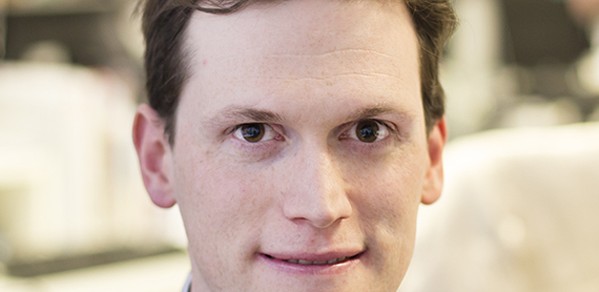
Ramboll associate structural engineer Gavin White, NCE's Young Consultant of the Year, is currently designing the tallest timber building in the world – a ten-storey residential tower in London in this article from New Civil Engineer.
As engineers we need to be working on our client’s behalf and not pushing things just because we think it’s right
Alumnus Gavin White
It is the most recent of more than forty timber buildings Mr White has designed, and his passion for the material is evident. He sees the use of timber in construction as one of the most simple and effective ways that structural engineers can lead the fight to combat climate change, and is on a crusade to educate the wider-design and construction industry about its possibilities as a mainstream structural material.
“I do a lot of talks with architects, contractors and clients to explain what it is and to change perceptions,” says Mr White. “A lot of people think it’s more expensive, or it can only be used in small buildings.”
Mr White’s interest in timber stems from an enthusiasm for sustainable design. He has been working for Ramboll (and its predecessor Whitby Bird) for 12 years, starting in London, and then moving to to the firm’s Cambridge office in order to focus on educational buildings. This in turn led to the progression towards timber, as education is one sector that has embraced the material. Since then, he has developed his expertise to the extent that in 2011 he became Ramboll’s worldwide expert on timber design. But as a structural engineer, responsible for managing a team of ten people, Mr White is aware that his job is not simply to promote one material if it is not the best solution.
“Although I like to push timber, I don’t push it blindly. You have to have a reason for it,” he says. “As engineers we need to be working on our client’s behalf and not pushing things just because we think it’s right.”
Given an opportunity, however, he can be very persuasive. The new City Academy in Norwich, which opened in 2012, was going to be built in concrete, which was comparable in price to the alternative timber option. Mr White went back to the supply chain and found ways to make savings in the cost of the timber design that eventually convinced the contractor that it would be the most cost effective solution. The success of the this project led to Ramboll designing another timber school in Greenford, West London, for the same contractor.
An alumnus of the Department, Mr White says he is concerned that the next generation of engineers is emerging from university with no real timber engineering knowledge and is working with both Bath and Cambridge Universities to address this by seeking out and supporting areas of timber research.
“If the industry is not aware of the advantages timber can present over traditional construction – fast erection, lightweight, carbon negative, clean sites, less waste – professionals will continue to turn to traditional alternatives with which they are familiar,” he says.
While Mr White’s passion for timber is undisputed, the judges were impressed by his knowledge of the wider industry, and the articulate way in which he could discuss a wide range of topics, from the technical issues surrounding material choice to the future of the consultancy sector and the role of the structural engineer.
“Structural engineers aren’t the people who make the building stand up once the architect’s designs are ready,” he says. “I want to be in there with the architect, shaping the design.”
Mr White’s role models are pioneering engineers who are “visionary in terms of their thinking and design focus” – and in choosing him as Young Consultant of the Year, the judges acknowledged that he has definitely inherited something of that spirit.
The original article appeared in the NEW CIVIL ENGINEER CONSULTANTS FILE 2014.

